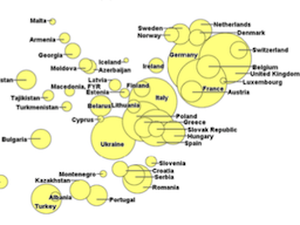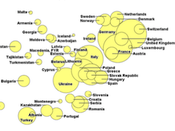Information
- Publication Type: Journal Paper (without talk)
- Workgroup(s)/Project(s):
- Date: September 2020
- DOI: 10.1109/TVCG.2020.3027368
- Journal: IEEE Transactions on Visualization and Computer Graphics (TVCG)
- Volume: x
- Pages: 1 – 14
Abstract
In this paper, we present an algorithm capable of mixed labeling of 2D and 3D objects. In mixed labeling, the given objects are labeled with both internal labels placed (at least partially) over the objects and external labels placed in the space around the objects and connected with the labeled objects with straight-line leaders. The proposed algorithm determines the position and type of each label based on the user-specified ambiguity threshold and eliminates overlaps between the labels, as well as between the internal labels and the straight-line leaders of external labels. The algorithm is a screen-space technique; it operates in an image where the 2D objects or projected 3D objects are encoded. In other words, we can use the algorithm whenever we can render the objects to an image, which makes the algorithm fit for use in many domains. The algorithm operates in real-time, giving the results immediately. Finally, we present results from an expert evaluation, in which a professional illustrator has evaluated the label layouts produced with the proposed algorithm.Additional Files and Images
Weblinks
BibTeX
@article{cmolik-2020-tvcg,
title = "Mixed Labeling: Integrating Internal and External Labels",
author = "Ladislav \v{C}mol\'{i}k and V\'{a}clav Pavlovec and
Hsiang-Yun Wu and Martin N\"{o}llenburg",
year = "2020",
abstract = "In this paper, we present an algorithm capable of mixed
labeling of 2D and 3D objects. In mixed labeling, the given
objects are labeled with both internal labels placed (at
least partially) over the objects and external labels placed
in the space around the objects and connected with the
labeled objects with straight-line leaders. The proposed
algorithm determines the position and type of each label
based on the user-specified ambiguity threshold and
eliminates overlaps between the labels, as well as between
the internal labels and the straight-line leaders of
external labels. The algorithm is a screen-space technique;
it operates in an image where the 2D objects or projected 3D
objects are encoded. In other words, we can use the
algorithm whenever we can render the objects to an image,
which makes the algorithm fit for use in many domains. The
algorithm operates in real-time, giving the results
immediately. Finally, we present results from an expert
evaluation, in which a professional illustrator has
evaluated the label layouts produced with the proposed
algorithm.",
month = sep,
doi = "10.1109/TVCG.2020.3027368",
journal = "IEEE Transactions on Visualization and Computer Graphics
(TVCG)",
volume = "x",
pages = "1--14",
URL = "https://www.cg.tuwien.ac.at/research/publications/2020/cmolik-2020-tvcg/",
}


 image
image paper
paper
